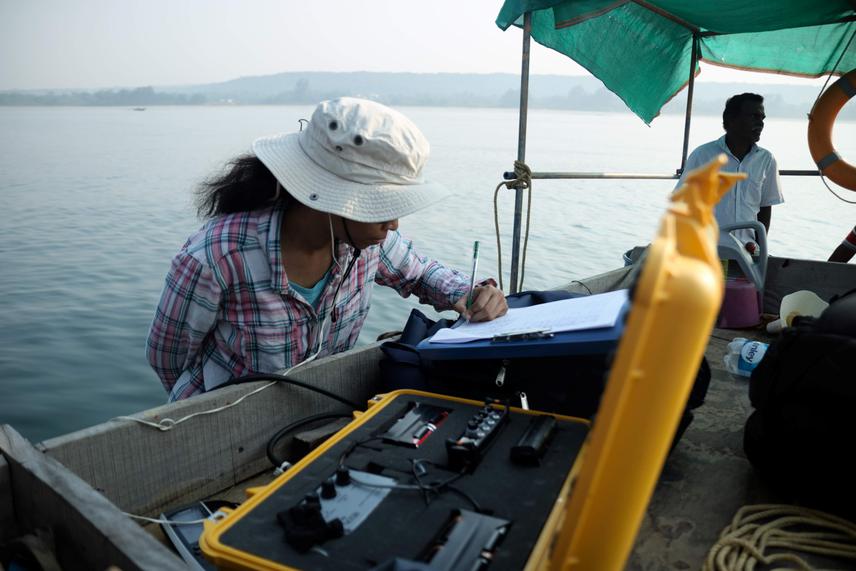Article featuring the project on Mongabay.
What underwater sounds tell us about marine life,
Audio: What underwater sounds can tell us about Indian Ocean humpback dolphins
13 Sep 2017 Malvan, India, Indian Sub-continent Marine | Cetaceans | Mammals
Assessing the Status of Humpback Dolphins and Finless Porpoises in a Marine Biodiversity Hotspot off the West Coast of India
Assessing the Status of Coastal Cetaceans in an Important Marine Mammal Area (IMMA) off the West Coast of India
Indian Ocean humpback dolphins are commonly found in coastal and estuarine waters, and inhabit one of the most disturbed zones in the marine environment. Apart from immediately lethal threats such as by-catch, these dolphins are exposed to chronic indirect pressures due to increasing levels of anthropogenic noise in their habitat. Despite their common occurrence in near-shore waters, data on their acoustic behaviour is extremely limited. Through this project we aim to document the different types of vocalisations produced by humpback dolphins and identify their behavioural context. We will also assess possible changes in their communication behaviour due to presence of increasing vessel traffic.

Indian coasts are facing high levels of anthropogenic impacts associated with the expansion of commercial fishing fleets, development of coastal infrastructure and increasing marine tourism. All these activities are steadily changing the inshore underwater soundscapes.
Humpback dolphins (Sousa plumbea) are one of the most common cetacean species inhabiting these coastal waters, and are particularly vulnerable to chronic acoustic disturbance from vessel traffic and other anthropogenic activities occurring close to shore.
To effectively assess the long-term impacts of increasing noise levels on the communication behaviour of local populations of humpback dolphins, we aim to first document and characterize the complete vocal repertoire of humpback dolphins found along Sindhudurg coast and then understand the behavioural context of these vocalisations.
Our previous study on the acoustic repertoire of humpback dolphins along the Sindhudurg coast described their tonal sounds (whistles) and classified these whistles into different categories according to their time-frequency characteristics. However, the behavioural context in which these different whistle types are used (logging, travelling, foraging, etc.) and how anthropogenic noise might impact the vocal and locomotive behaviour of these animals remains unknown. To date, the higher frequency, transient acoustic signals (echolocation clicks and burst pulses) produced in the context of navigation and prey detection in humpback dolphins have also not been described.
Through this study we aim to provide a detailed description of the entire acoustic repertoire of humpback dolphins in relation to surface behaviour. We will then assess whether communication behaviour of these dolphins is affected in the presence of increasing vessel traffic.
Article featuring the project on Mongabay.
What underwater sounds tell us about marine life,
Audio: What underwater sounds can tell us about Indian Ocean humpback dolphins